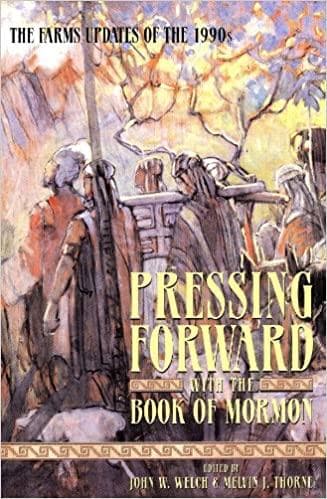Book
69 Chapters

“He caused a tower to be erected, that thereby his people might hear the words which he should speak unto them.” (Mosiah 2:7)
While scholars are uncertain about the precise nature of the ʿammud1 (see the previous article), it is clear that it was something other than a pillar. Roland de Vaux imagines the king “standing on a pedestal” where presumably he worshipped God.2 Gerhard von Rad, commenting on the pillars in 2 Kings, sees them as some kind of high, narrow platform: “The king would have had to be visible to the crowd which had gathered for the solemnities, so that one may probably think of some sort of pillar-like platform.”3
The biblical Hebrew literally says that the king or priestly leader stood on a “standing thing.” Only later did the Greek LXX translation promote the specific idea that the ʿammud was precisely a pillar (stylos). Thus, once again King Benjamin’s text is consistent with the broader Hebrew term, which can easily refer to any kind of platform or, indeed, to a tower.
Moreover, scholars are uncertain about the purpose of the ʿammud. Kraus speculates that the king was lifted onto the platform in order to receive “the homage of the congregation.”4 But a careful reexamination of the Bible finds that the ʿammud always stood in or by the temple as the king or leader officiated at times of coronation, lawgiving, covenant renewal, or temple dedication. Thus Geo Widengren has insightfully concluded: “At least towards the end of the pre-exilic period, but possibly from the beginning of that period, the king when reading to his people on a solemn occasion from the book of the law and acting as the mediator of the covenant making between Yahweh and the people had his place on a platform or a dais.”5
Accordingly, the use of the tower by King Benjamin was especially pertinent, inasmuch as his speech involved so many of these elements of an ancient Israelite solemn assembly: a coronation proclamation (see Mosiah 2:30), a stipulation of covenant between the new king and the people (see Mosiah 2:31), a renewal of the basic covenant between God and the people (see Mosiah 5:5), and the consecration of the king and appointment of priests (see Mosiah 6:3). Thus again, the biblical texts give a picture whose focus is sharpened by the Book of Mormon text.
Reflection on Benjamin’s tower draws another possible connection to mind. The word ʿammud is used in other Old Testament texts to describe the pillar of light (or fire) and the pillar of cloud that stood before the Tabernacle, signaling God’s presence at that holy sanctuary.6 Is it possible that Benjamin’s tower, standing beside the temple of Zarahemla, in turn signified the pillar of God’s presence? If so, does this explain why Benjamin was so careful at the beginning of his speech to disclaim any implication that he was “more than a mortal man” (Mosiah 2:10; compare 2:26)?
The tower built by Benjamin was evidently more than just a way to communicate to the people. It was a rich symbolic part of ancient Israelite tradition in which the king stood on a platform at the temple to officiate between God and his people.
Research by John W. Welch, Terry L. Szink, and others, originally published as a FARMS Update in Insights(October 1995): 2.
1. See T. R. Hobbs, 2 Kings, Word Biblical Commentary (Waco: Word Books, 1985), 13:142, is “uncertain” but suggests “some kind of column, podium, or platform.”
2. Roland de Vaux, Ancient Israel (New York: McGraw-Hill, 1965), 1:102–3.
3. Gerhard von Rad, “The Royal Ritual in Judah,” in The Problem of the Hexateuch and Other Essays, trans. E. W. Trueman Dicken (New York: McGraw-Hill, 1966), 224.
4. Hans-Joachim Kraus, Worship in Israel: A Cultic History of the Old Testament, trans. Geoffrey Buswell (Richmond: John Knox, 1966), 224.
5. Geo Widengren, “King and Covenant,” Journal of Semitic Studies 2 (1957): 10; it should also be noted that in modern Judaism the Torah is to be read from a raised platform called a bimah which is to be placed in the center of the synagogue. Some have connected this structure with the platforms in the temples. See “Bimah,” in Encyclopaedia Judaica (Jerusalem: Keter, 1971), 4:1002–6.
6. See Henri Frankfort, Kingship and the Gods: A Study of Ancient Near Eastern Religion as the Integration of Society and Nature (Chicago: University of Chicago Press, 1948), 245–46.
Book
69 Chapters
Items in the BMC Archive are made publicly available for non-commercial, private use. Inclusion within the BMC Archive does not imply endorsement. Items do not represent the official views of The Church of Jesus Christ of Latter-day Saints or of Book of Mormon Central.